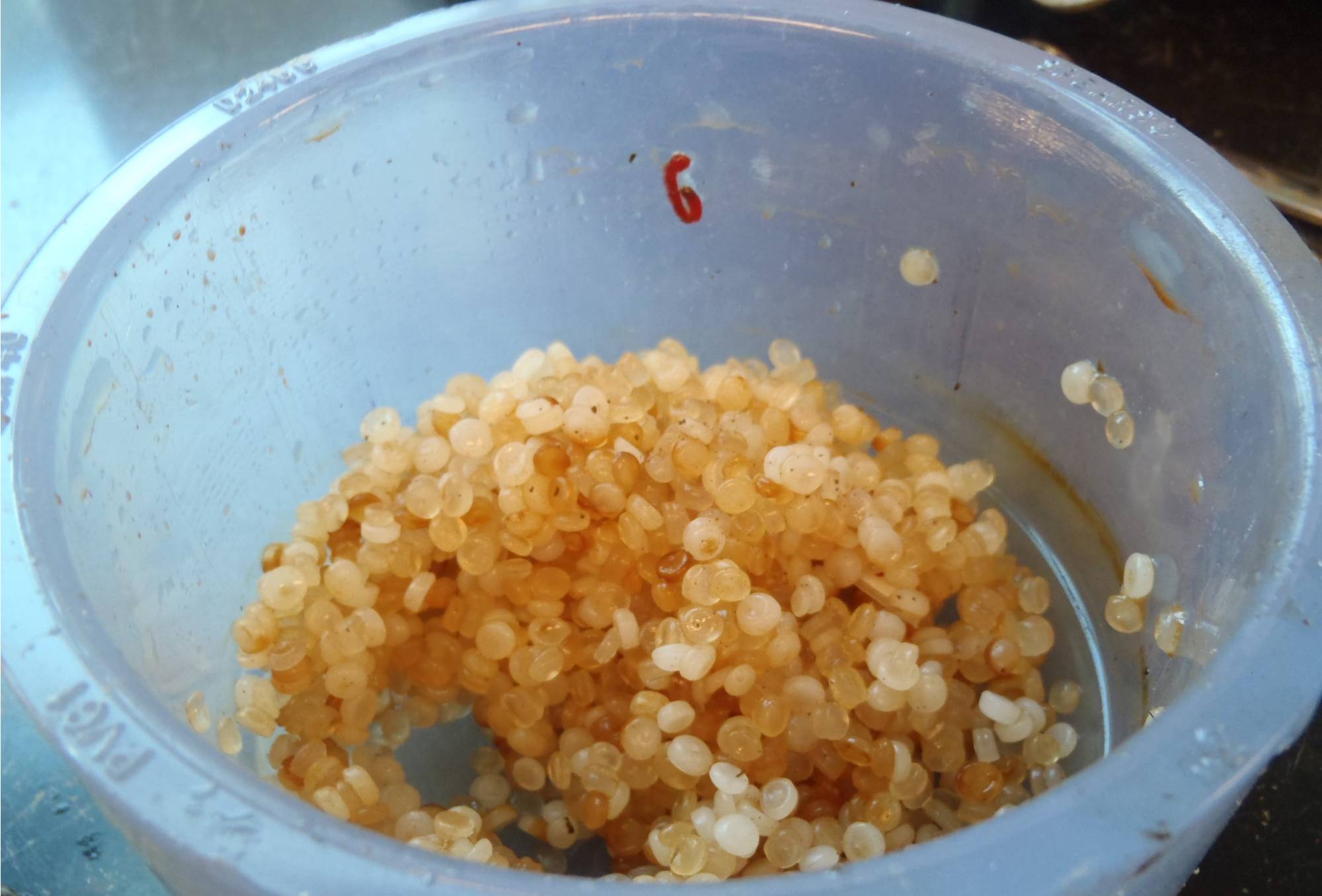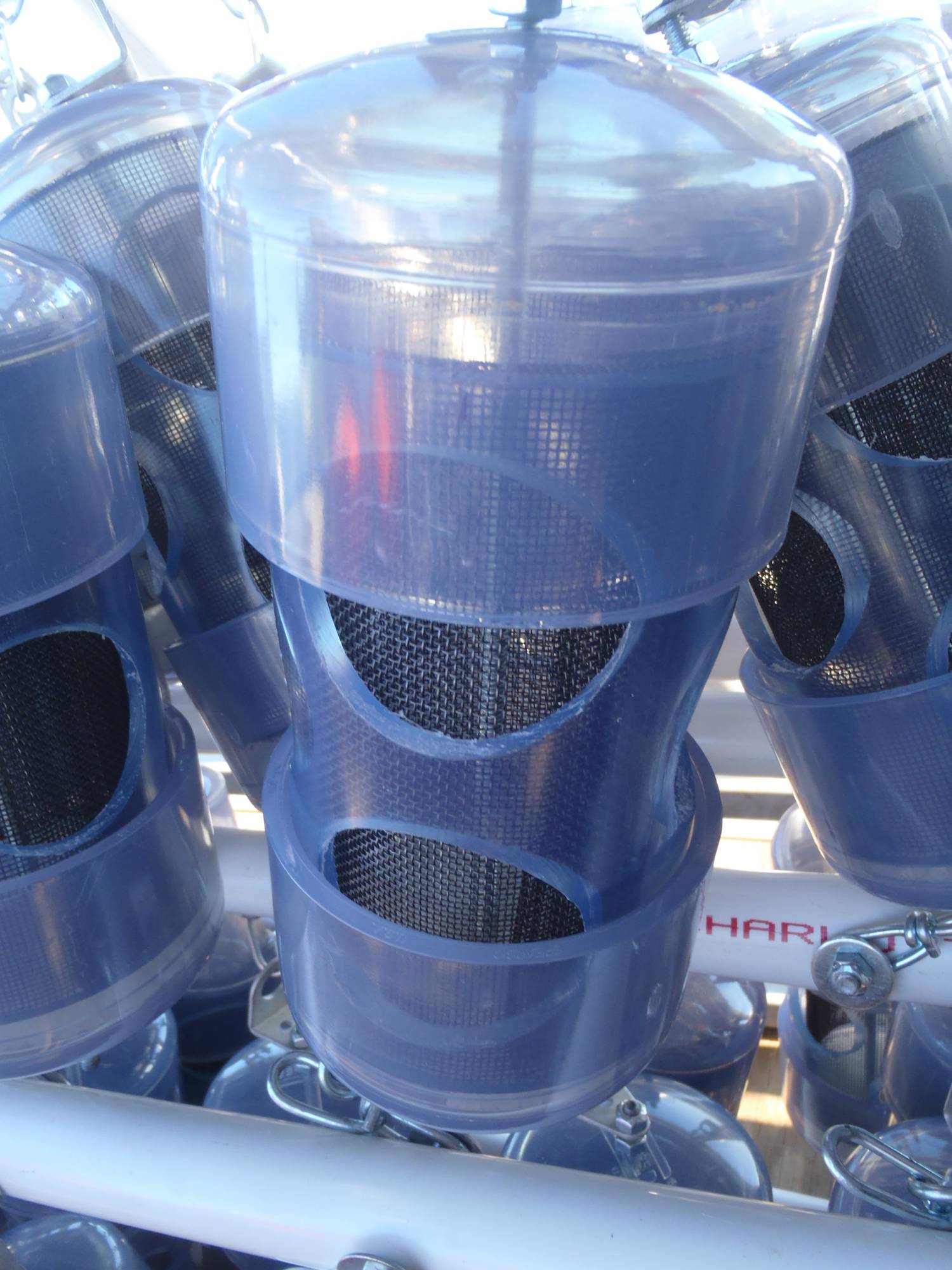Plastic Debris as an Exposure Source for Persistent Organic Pollutants (POPs) in Aquatic Biota Specific to Muskegon Lake
Background
Microplastics are small (generally <5 mm) pieces of plastic that usually form as breakdown products from larger plastic pieces. As both a local and global problem, plastics are gaining more attention as single-use plastic items such as straws and shopping bags are starting to be banned by municipalities and companies. When a piece of microplastic winds up in water, a consortium of different microorganisms, referred to as a biofilm, forms on their surface. Persistent organic pollutants (POPs), some of which are toxic, can be taken up by the microorganisms in the biofilm, attach to the biofilm layer, or attach directly to the plastic. As the biofilm or plastic is ingested by other organisms, such as fish, POPs can work their way up the food web. Microplastics may directly harm animals by clogging digestive systems or indirectly via the chemicals attached to biofilm or microplastics.

Close-up view of microplastic pellets and biofilm after 1 month of Muskegon Lake incubation.
Project Summary
AWRI is conducting analyses using three different types of commonly available plastics that are often found as microplastic waste. Known amounts of microplastic pellets were incubated in specially designed containers, which kept them in place but allowed lake water to flow through them, at near-surface and near-bottom depths in Muskegon Lake during summer 2018. After 1 month and 3 months of in situ incubation, microplastics were retrieved and sampled to measure POPs in biofilms. Additional subsamples were collected for genetic analysis of biofilms. Overall, this experiment will help inform what kinds of plastics are more toxic than others and where potential toxicity is coming from.

Microplastics sampling container prior to Muskegon Lake incubation.
Funding for this work is provided by the Allen and Helen Hunting Research and Innovation Fund held at Grand Valley State University’s Annis Water Resources Institute.
Project Partners
John Scott, Senior Analytical Chemist, Illinois Sustainable Technology Center, University of Illinois at Urbana-Champaign
Charlyn Partridge, Assistant Professor, Annis Water Resources Institute, Grand Valley State University
Contacts
Al Steinman, Project Manager: [email protected]
Maggie Oudsema, Technician: [email protected]

